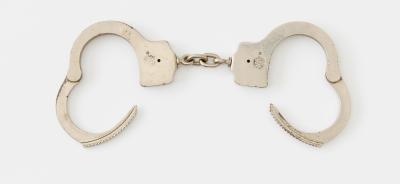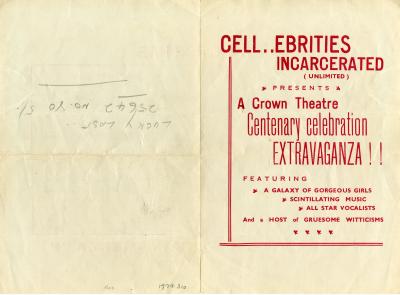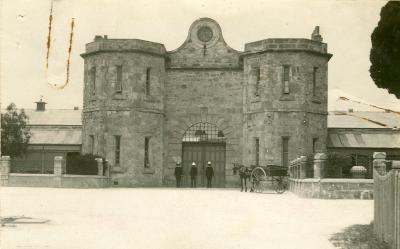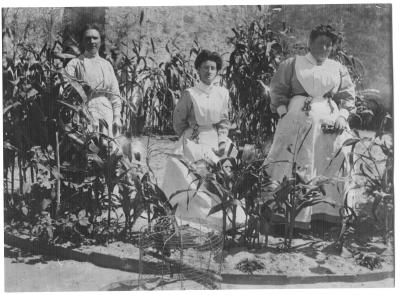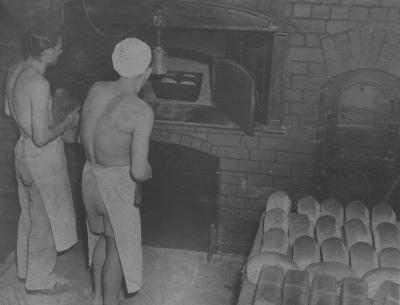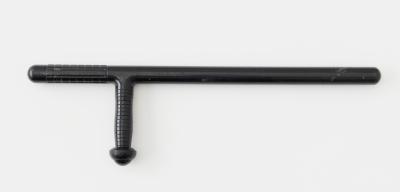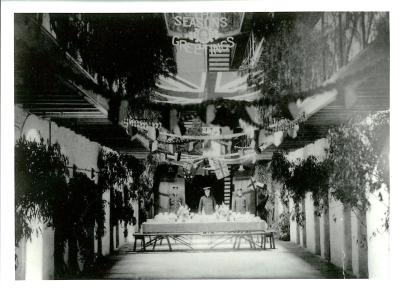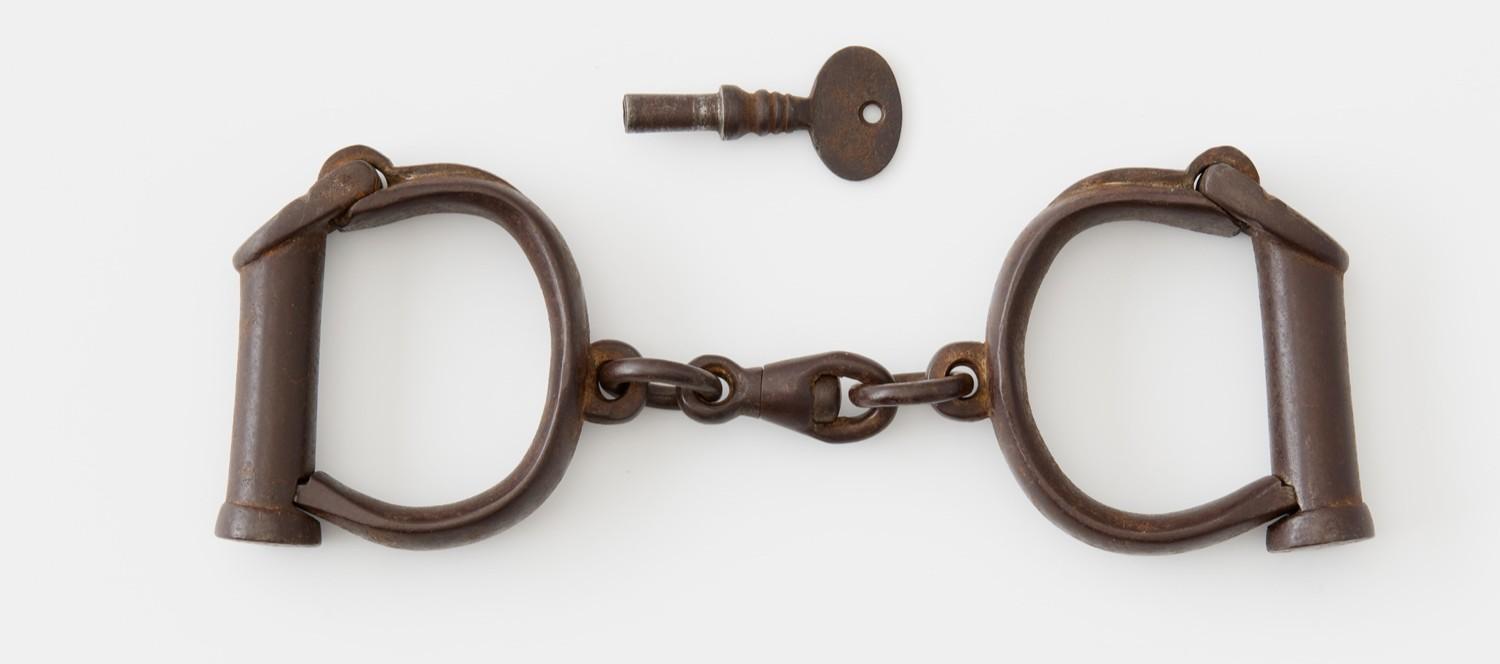HANDCUFFS WITH KEY
1854 - 1895(a) Small, semi circular, heavy metal handcuffs. Two semi circular, thick metal cuffs, with 'L/27' stamped into the surface. Each straight, cylindrical, metal barrel across the top. Each barrel is hinged at one end with a lock mechanism for a key at the opposite end. Stamped into the surface of the hinge is '27'. On the opposite end of the barrel is stamped 'W D' with a broad arrow. A small eyelet has been cast into the opposite side of each cuff. The two cuffs are linked together via the eyelets by two long, oval, metal rings, connected in the centre by a swivelling metal joint.
(b) Small, cylindrical, metal key for handcuffs. Small, hollow, cylindrical metal bar with several raised ridges in the middle. Attached to one end is a wide, thin metal oval disk with a small hole near the top. Stamped into the surface, wither side of the hole, is 'N 35'.
Provenanced to Fremantle Prison.
Details
Details
(a) 'L', 'L', '27', convict broad arrow/ 'W D'
(b) 'N 35'
The ‘convict’ broad arrow originated with Henry Sydney, Earl of Romney who was the Master General of Ordnance 1693-1702. The broad arrow was used in his coat of arms and adopted as the symbol for ordinance in the British Army when asked to mark all government property to reduce theft.
The 'W D' stands for War Department, and was used to mark British Government property between 1854 to 1895.
Open in Google Maps
Nearest geotagged records:
- PHOTOGRAPH OF CATHOLIC CHAPEL AFTER 1988 RIOT (0km away)
- AD REM PRISON NEWSLETTER (0km away)
- CONCERT PROGRAMME (0km away)
- IMAGE OF CHRISTMAS FESTIVITIES (0km away)
- ENTRANCE TO FREMANTLE PRISON (0km away)
- IMAGE OF SALLY PORT (0km away)
- IMAGE OF THE MAIN CELL BLOCK (0km away)
- GATEHOUSE/RECEPTION (0km away)
- IMAGE OF BAKING BREAD (0km away)
- PHOTOGRAPH OF PRISON LIBRARY (0km away)
Nearby places: View all geotagged records »
More items like this
Other items from Fremantle Prison
- CONCERT PROGRAMME
- TATTOO APPARATUS
- GATEHOUSE/RECEPTION
- FEMALE DIVISION MATRONS IN GARDENS
- IMAGE OF VEGETABLE GARDENS
- IMAGE OF BAKING BREAD
- PRISON OFFICERS AND OFFICIALS
- PHOTOGRAPH OF CATHOLIC CHAPEL AFTER 1988 RIOT
- WEIGHT
- Slide of 11th Australian Detention Staff 1944
- RIOT STICK
- IMAGE OF CHRISTMAS FESTIVITIES

